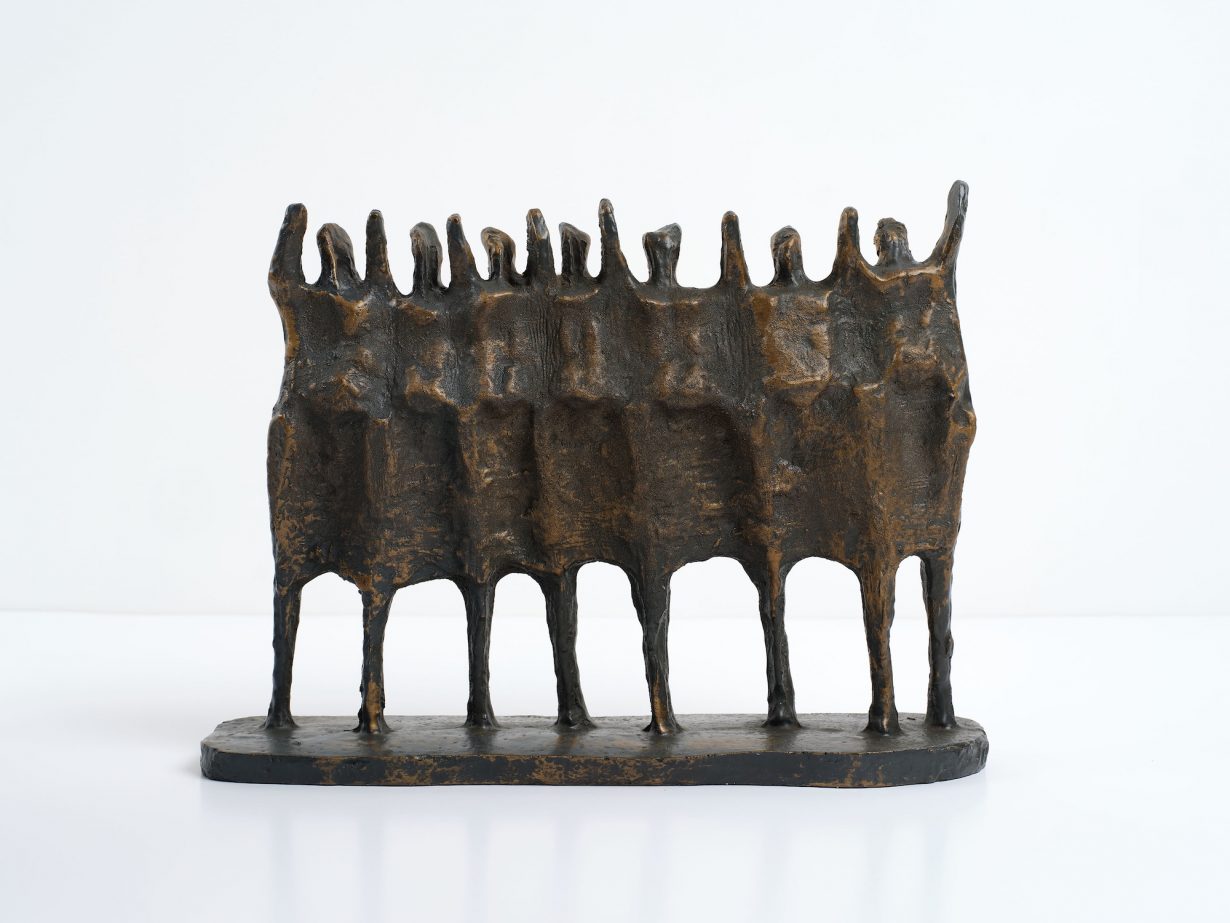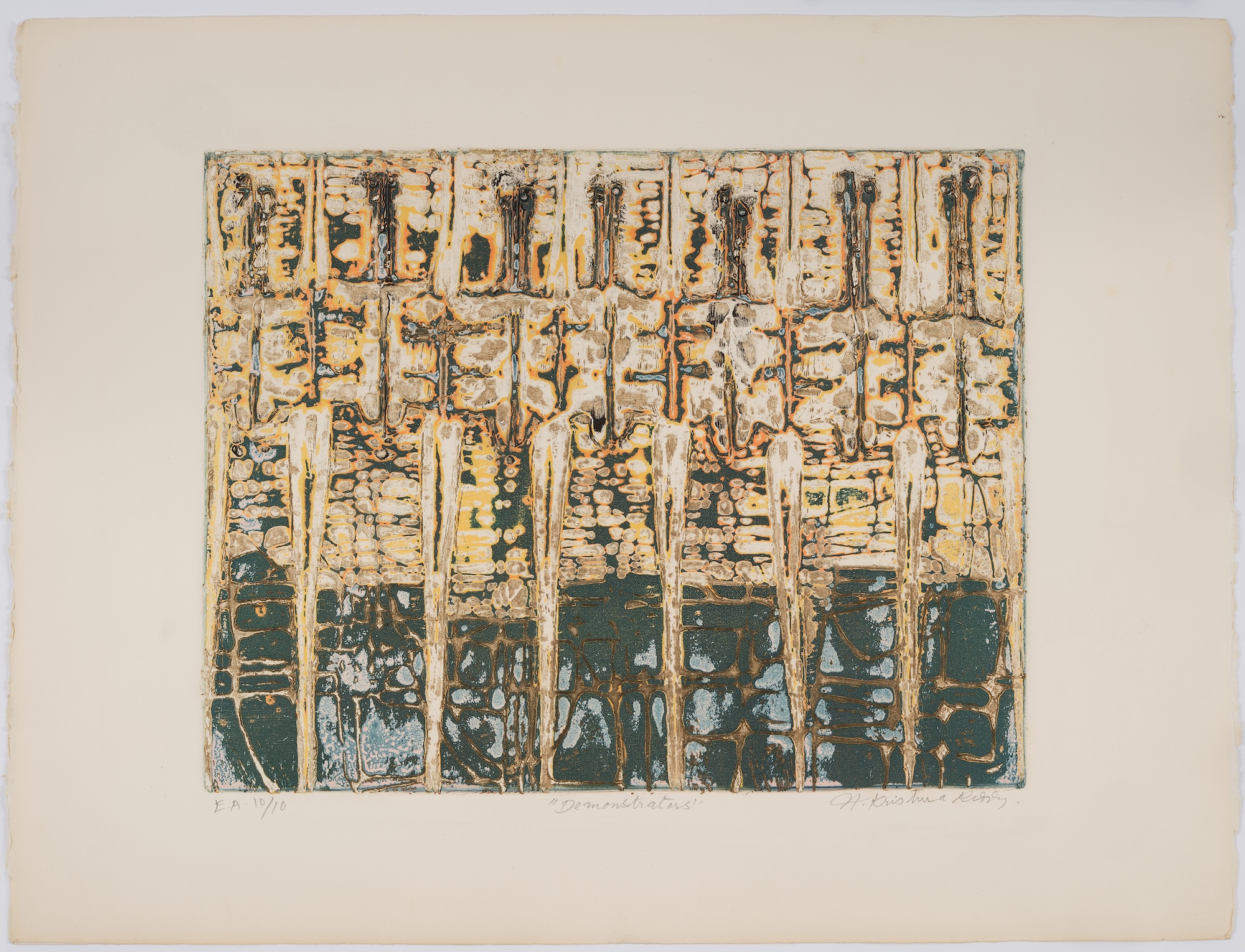The Indian sculptor and printmaker explored, with a modernist sensibility, the interconnectedness of living beings
Krishna Reddy, born in 1925 in southern India, is best known for his association with Atelier 17, a printmaking workshop and hub for avant-garde experimentation in interwar Paris. There, alongside Stanley William Hayter and Kaiko Moti, Reddy developed viscosity printing. This formal innovation to the printmaking process uses linseed oil to alter paint thickness, allowing artists to ink with layers of colour before passing a plate through the press. Trained initially in sculpture before adopting printmaking, Reddy used this technique to achieve depth and texture in his dynamic abstractions of the natural world. Heaven in a Wildflower, Reddy’s first monographic exhibition in New York in over 40 years, and the first showing of his work in New York since his death in 2018, brings together sculptures, drawings, photographs, engraved plates, carving tools and 50 prints, all but one created between 1952 and 1997, revealing his interest in the interconnectedness of living beings and his experiment-driven approach to printmaking.
In Water Lilies (1959), a mixed colour intaglio on cream wove paper displayed at the entrance, chasmal cuts explode from a white void, fading into a green and teal ground. Emanating from this web are pink, red and yellow hues. These lines coalesce into biomorphic networks, conjuring growth by root propagation and simultaneously instantaneous cosmic expansion. An ambiguity here – between micro, macro and where each form ends and the next begins – evokes Reddy’s worldview that all beings are ‘dynamic processes’ growing in delicately interwoven patterns. Elsewhere in the gallery, various impressions of a mixed colour intaglio titled Fish (1952) hang side by side. While each print features an angular brown and red form bisected by an undulating white line, the juxtaposition reveals the experiments – with colour, transparency and inversions of the printing matrix – that occurred between pulls of the press.

A semiabstract green, blue and yellow intaglio print, Demonstrators (1968), evokes the May 1968 protests in France, in which Reddy participated. The work depicts emaciated protesters, whose elongated forms, the exhibition catalogue suggests, may have been influenced by the work of the European modernists Constantin Brâncuși and Alberto Giacometti – Reddy’s acquaintances in Paris. Standing together, the protesters’ withered forms seem to create a wall that spans the length of the sheet. Installed in front of this print, a resin sculpture with a bronze patina, Untitled / Demonstration (with multiple figures) (1968), depicts seven more figures standing with their arms raised, melding together in a row. Here, what are implied to be disenfranchised individuals transform, through collective action, into a more powerful unity.
Reddy’s work resonates with midcentury explorations of spirituality and science, yet due to his penchant for experimentation and his exposure to both European and early Indian modernism – according to the catalogue, he grew up studying with the latter movement’s leading artists – his oeuvre resists typification. His viscosity printing technique is often framed as a technical innovation, but it emerges here as an essential method for expressing the change inherent in biological and social processes. The exhibition succeeds in demonstrating the breadth of his formal exploration, but it is strongest in its moments of juxtaposition, where print and sculpture converge to reveal an artist who saw artmaking as a continuous process of transformation, and a means for revealing the natural world and the invisible, imperceptible webs connecting those in it.
Heaven in a Wildflower at Print Center New York, through 21 May
